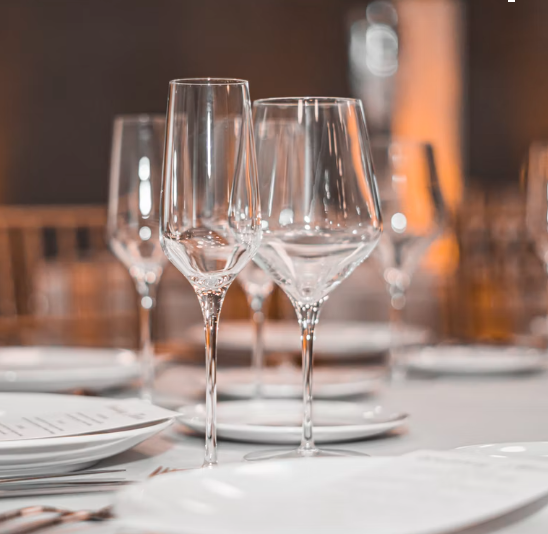Wine
Types of Wine Glasses
You find the corkscrew and open the bottle. You fumble in the kitchen cupboard for a clean glass to pour that wine into, but which one do you choose? Understanding wine glass types can affect your wine enjoyment. In addition, the style of glass can impact how you perceive the aroma, color, and flavor of your wine. Check out our guide for which wine glass you should choose for your drink of choice.
Red wine glasses
Red wines tend to be served in larger, wider glasses. Having a wide body and rim allows for the liquid to be swirled more efficiently, and the width of the glass also helps to capture more of those all-important volatile aroma compounds. You can pull out all of those complex scents and enjoy them as you smell the wine, but more importantly, raise the glass to your lips to taste. Of course, a large part of our sense of taste comes from perceiving scent, so a glass with a larger rounded body is essential.
This kind of glass will also tend to have a wider rim. As more of the glass meets with your lips, the glass shape helps smooth the liquid across your tongue, helping to spread the tannins more evenly across your tastebuds. This will smooth them out and make them more enjoyable to drink.
White wine glasses
You should reach for a taller glass with a slightly narrower body for white wines. The thinner bulb means that less of the liquid is in contact with the ambient temperature, meaning it will stay chilled longer. White wines have more delicate aromas, and a glass with a narrower opening will help to concentrate them in the direction of your nasal passage. It is easier for you to detect less pronounced smells in this way, so you can still appreciate the complexity of the nose on a less prominent wine.
The narrower rim on a white wine glass funnels the liquid into your mouth in a more concentrated stream, helping emphasize its natural acidity making the wine taste more vibrant and refreshing.
Sparkling wine glasses
Champagne, sparkling wines and Prosecco are served in tall, slender wine glasses. A thin body reduces the amount of liquid exposed to the air decreasing the rate at which carbon bubbles dissipate, keeping your bubbly wines bubbly.
A tall, slim glass will also serve the same purpose as a white wine glass. It accentuates the acidity of the wine, which is vital for giving sparkling wines their crispness. It will also help concentrate the more delicate aromas and allow you to perceive them more easily. Also, it’s worth noting that they look exquisite and make a lovely chime when you make a toast.
Wide-bodied squat ‘coupe’ glasses were popular in the early 20th century. The wide bowl acts as an aroma collector, helping you pull the delicate scent while allowing you to take bigger sips to fill your mouth with flavor. The downside is more of your sparkling wine will be exposed to air leading the wine to go flat more quickly, so you need to decide if you are willing to sacrifice those bubbles.
Dessert wine glasses
Dessert wine glasses are probably the least commonly used of all wine glass types, but having a couple in the cupboard for special occasions doesn’t hurt. Dessert wines are often relatively more expensive than other types of wine as they are usually more costly to produce.
Dessert wine glasses are smaller, with a broad base tapering to a narrower rim. Due to their higher alcohol content, dessert wine serving sizes are smaller — a little goes a long way. However, you will still want to give them a good swirl and enjoy their complex aroma profile. Be warned, high ABV (Alcohol By Volume) means that if you put your nose into the glass too close and too quickly, the fumes from the alcohol can numb your nose. To avoid the shock, take gentle, distant passes of the glass in front of your nose and gradually bring it closer to your face to allow your senses to become accustomed to the robust aromas.
To stem or not to stem.
These days, you will find more and more wine glass types on the market without stems. They are easy to hold and feel less formal than traditional wine glasses. The shape has more stability than a stemmed glass, which is top-heavy and easier to knock over. However, the connoisseur would argue that stemless glass is more susceptible to changes in temperature. Your body heat will gradually warm the wine as you hold the glass. While it may be less of a problem with red wines, it will certainly impede your enjoyment of a crisp white. A glass with a stem will enable you to swirl the wine and enjoy the aromas. In addition, its clarity and color are far simpler to judge in a traditional stemmed glass.
Next time someone asks, we hope you feel better prepared to answer the question, “which wine glass should I use?” So line up your glasses and enjoy your favorite Sweet Oaks wine at your next gathering and get together.



